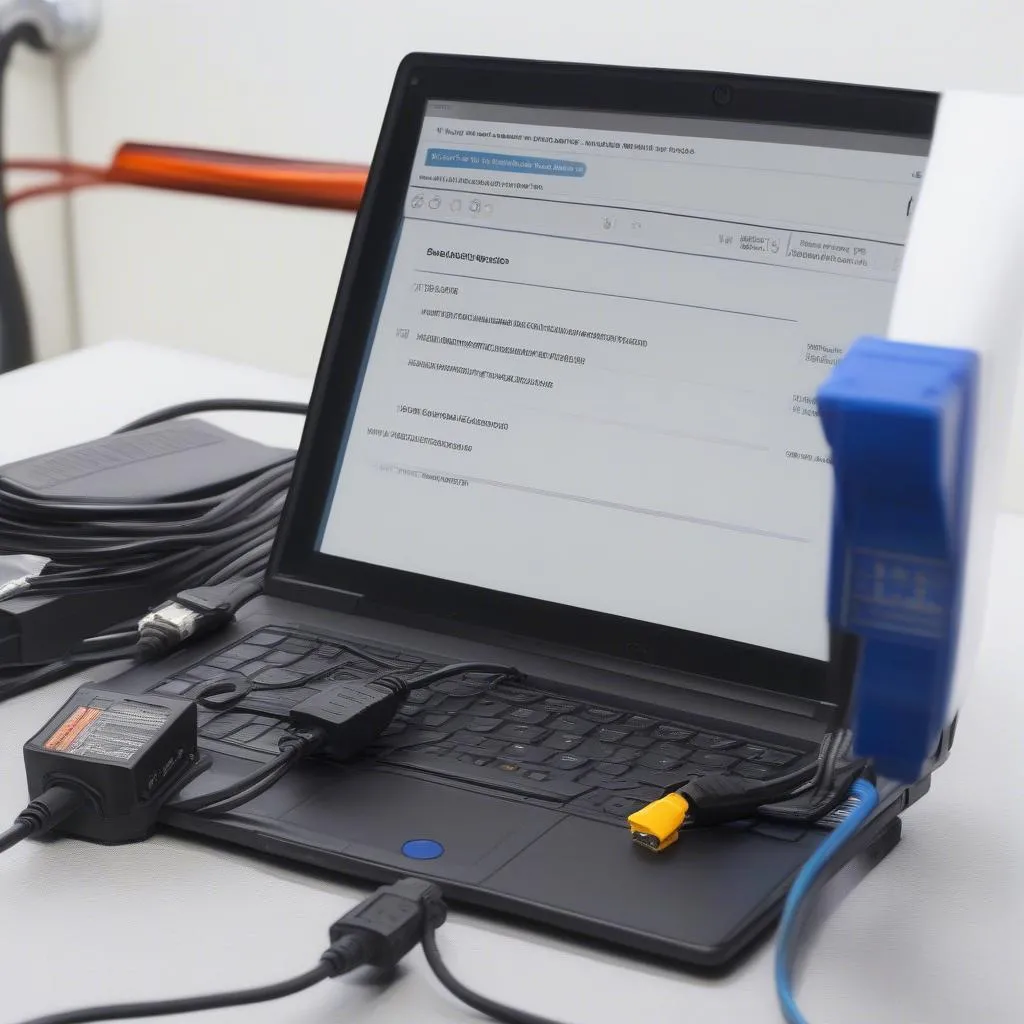Tuning your 2.0T FSI engine with VCDS and a new air intake can offer noticeable performance gains. This guide will walk you through the process, explaining the benefits, risks, and necessary steps involved in optimizing your 2.0T FSI using VCDS (VAG-COM Diagnostic System) in conjunction with an upgraded air intake.
Understanding the 2.0T FSI and VCDS
The 2.0T FSI engine is known for its responsiveness and tuning potential. VCDS, a powerful diagnostic and modification tool, allows access to the engine control unit (ECU), enabling adjustments to various parameters, including air/fuel ratios, ignition timing, and boost pressure. Combining VCDS tuning with a performance air intake can further enhance power output and throttle response.
Choosing the Right Air Intake for Your 2.0T FSI
Selecting the right air intake is crucial. Consider factors like material (e.g., carbon fiber, aluminum), filter type (e.g., oiled, dry), and design (e.g., short ram, cold air). A high-quality intake system will improve airflow, leading to more efficient combustion and increased power.
Installing Your New Air Intake
Before you start tuning with VCDS, install the new air intake. Carefully follow the manufacturer’s instructions. Ensure all connections are secure and airtight to prevent leaks and maintain optimal performance.
Connecting to Your 2.0T FSI with VCDS
With the new intake installed, connect your VCDS cable to the OBD-II port of your vehicle and launch the software. Ensure you have the correct version of VCDS compatible with your vehicle’s model year.
Tuning Your 2.0T FSI with VCDS After Air Intake Installation
Now, the actual tuning process begins. Within VCDS, navigate to the engine control module. Here, you can adjust various parameters. Remember, improper adjustments can damage your engine. It’s recommended to start with small incremental changes and monitor the results.
Adjusting Air/Fuel Ratios
The air/fuel ratio is crucial for optimal performance and engine health. With the new air intake, you might need to adjust the fuel trims to compensate for the increased airflow.
Modifying Ignition Timing
Optimizing ignition timing can improve power and efficiency. However, advancing the timing too much can lead to detonation, which can damage your engine.
Adjusting Boost Pressure (If Applicable)
If your 2.0T FSI is turbocharged, you can adjust the boost pressure using VCDS. Increasing boost can significantly increase power, but again, proceed with caution. Too much boost can put excessive strain on engine components.
Monitoring and Fine-tuning
After making adjustments, monitor your engine’s performance using VCDS’s data logging capabilities. Observe parameters like intake air temperature, boost pressure, and air/fuel ratios. Fine-tune the settings based on your observations and driving experience.
Common VCDS Tuning Questions for 2.0T FSI Air Intake Upgrades
What are the common mistakes to avoid when tuning with VCDS? A common mistake is making drastic changes without understanding their impact. Start with small adjustments and monitor the results.
How can I tell if my tuning adjustments are beneficial? Monitor your car’s performance and use VCDS to log data. Look for improvements in horsepower, torque, and fuel economy.
Conclusion
Tuning your 2.0T FSI with VCDS and a new air intake can unlock significant performance gains. However, it’s essential to proceed with caution and understanding. By following the steps outlined in this guide and monitoring your engine’s performance closely, you can safely and effectively optimize your 2.0T FSI for enhanced power and responsiveness. Remember, when in doubt, consult with a professional tuner experienced with VCDS and 2.0T FSI engines.
FAQ
- Can I damage my engine by tuning with VCDS? Yes, improper adjustments can lead to engine damage.
- What is the best air intake for a 2.0T FSI? The best intake depends on your specific needs and driving style.
- Do I need any special skills to use VCDS? Basic computer skills and a willingness to learn are sufficient.
- Is tuning with VCDS legal? Tuning regulations vary by location. Check your local laws and regulations.
- Can I reverse the changes made with VCDS? Yes, you can always revert to the original factory settings.
- What other modifications can I make with VCDS? VCDS allows adjustments to various parameters, including lighting, convenience features, and more.
- Where can I find more information about VCDS tuning? Online forums and communities dedicated to VW/Audi tuning are excellent resources.
Need help? Contact us via Whatsapp: +1 (641) 206-8880, Email: CARDIAGTECH[email protected] or visit us at 276 Reock St, City of Orange, NJ 07050, United States. Our customer support team is available 24/7.

